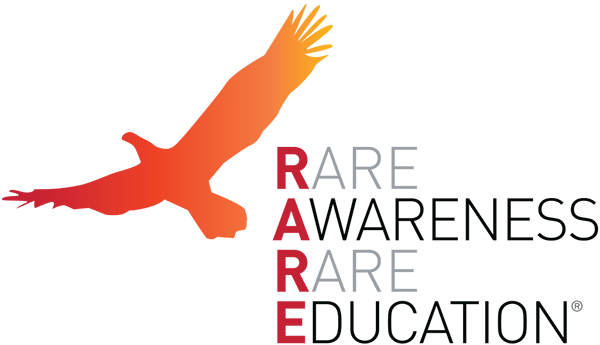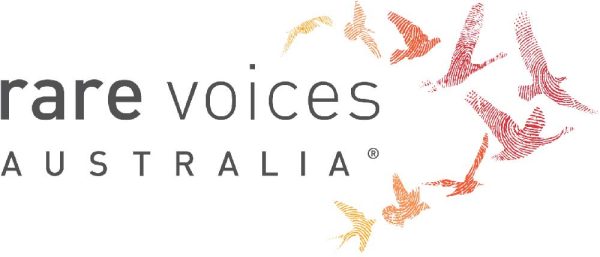Poland syndrome
Quick Search
- Summary
- Synonyms and Classifications
- Symptoms
- Disability Impacts
- Cause and Inheritance
- Diagnosis
- Treatment
- Clinical Care Team
- Clinical Care Guidelines
- Emergency Management
- Research
- Rare Disease Organisation(s)
- Lived Experience
- Support Services and Resources
- Mental Health
- Other Information
- Useful Links for Healthcare Professionals
Summary
Poland syndrome is a congenital condition (present from birth) in which there is missing or undeveloped muscles usually on one side of the body, affecting the chest, breast, shoulder, arms and hand. This often results in absence (aplasia) of chest wall muscles on one side of the body (unilateral) leading to the chest being not symmetrical, and hand malformations on the same side of the body (ipsilateral). The right side of the body tends to be affected in most cases. The exact cause of Poland syndrome is not known. Both males and females can be affected by Poland syndrome but it appears to be more common in males.1
Synonyms and Classifications
Synonyms: Poland Anomaly; Poland Sequence; Poland Syndactyly; Unilateral defect of pectoralis muscle and syndactyly of the hand.
Universal rare disease classifications provide a common language for recording, reporting and monitoring diseases. Please visit the Rare Disease Classifications page for more information about these internationally recognised classifications.
Symptoms
Symptoms of Poland syndrome may vary between individuals. The major feature of Poland syndrome is the undeveloped or absent portion of the sternocostal head of the pectoralis major, which is the chest muscle that originates from the breastbone (sternum) and upper ribs.1-6 The pectoralis major consists of most chest muscles that are lying underneath the breast. It allows for movement like lifting a cup.8 In Poland syndrome, the pectoralis major is usually only affected on one side of the body (unilateral) and results in the chest appearing asymmetrical.
The pectoralis minor, which is a smaller muscle underneath the pectoralis major is often also missing on one side of the body. The pectoralis minor is thinner and is found below the pectoralis major. It is important in stabalizing the scapula.8
Other chest muscles and muscles of the back may also be missing on that side of the body. There may also be abnormalities/defects of the rib cage (thoracic cage), breast area, shoulder, upper limbs and hands including shorter, webbed fingers.1
Please speak to your medical team to learn more about the symptoms and health implications of Poland syndrome.
Disability Impacts
Rare diseases are often serious and progressive, exhibiting a high degree of symptom complexity, leading to significant disability. Majority of the estimated two million Australians living with a rare disease meet the Australian Government’s definition for disability (in accordance to the Australian Public Service Commission and Australian Bureau of Statistics), and many experience severe and permanent disability impacts. If you or someone you care for is experiencing disability-related impacts from a rare condition, please speak with a health or disability professional for advice. Information about relevant disability support can be found at the RARE Portal’s Disability Support Information page.
Cause and Inheritance
The cause of Poland syndrome is unknown. However, there are a few familial cases, in that multiple members of the same family have been diagnosed with Poland syndrome – this has led to the suggestion that there may be genetic factors contributing to Poland syndrome, but the genetic basis is not known or well understood.4
If you would like to learn more about the inheritance and impact of this condition, please ask your doctor for a referral to a genetic counsellor. Genetic counsellors are qualified allied health professionals who can provide information and support regarding genetic conditions and testing. More information about genetic counselling can be found at:
- Information on Genetic Services
- The National and State Services pages underneath the ‘Genetic Counselling’ sections listed
Diagnosis
Diagnosis of Poland syndrome is made based on characteristic clinical features.5,6
Consensus based recommendations for diagnosis and medical management of Poland syndrome (sequence) (2020) developed by working group of 35 clinical experts in Italy lists recommendations for clinical diagnosis, as summarised in the following tables: 6
- Table 1: Recommendations for diagnosis of PS (major complication)
- Table 2: Recommendations for diagnosis of PS (principal diagnostic criteria).
As part of the diagnosis process, doctors may also do tests to rule out other conditions that have similar symptoms (differential diagnosis), such as Swyer-James syndrome, chest wall anomalies, breast/nipple anomalies, isolated thoracic lipoatrophy, and isolated hand/upper limb anomalies without pectoralis major muscle involvement.1,6,7
Please speak to your medical team to learn more about the available diagnostic pathways for Poland syndrome.
Treatment
There is currently no curative treatment for Poland syndrome. Treatment is targeted at symptomatic management, reduce complications and improve quality of life, which involves a multidisciplinary care team. This may include surgical procedures such as thoracic surgery, hand surgery and plastic surgery, as well as physiotherapy.6
Please speak to your medical team to learn more about the possible treatment or management options for your condition. Treatment will depend on an individual’s specific condition and symptoms. It is also important to stay connected to your medical team so that you can be made aware of any upcoming clinical trial opportunities.
Clinical Care Team
Clinical care for rare diseases often involves a multidisciplinary team of medical, care and support professionals. Please note that the information provided here is as a guide and that RVA does not necessarily monitor or endorse specific clinics or health experts.
Healthcare professionals involved in the care of individuals with Poland syndrome may include general practitioners (GP), paediatricians, pulmonologists, cardiothoracic surgeons, orthopaedic surgeons, plastic surgeons and physiotherapists.5,6 The need for different healthcare professionals may change over a person’s lifetime and extend beyond those listed here.
Clinical Care Guidelines
We are not aware of any clinical care guidelines for Poland syndrome in Australia. If you know of any relevant care guidelines, please let us know via the Contribute page.
The following guidance is available from international experts outside Australia; however, there may be information that is not relevant or applicable to the Australian context, and may not be up to date:
Consensus based recommendations for diagnosis and medical management of Poland syndrome (sequence) was developed by working group of 35 experts, including clinical and molecular geneticists, paediatricians, plastic, thoracic and hand surgeons, psychologists, radiologists and physical therapists; published in 2020.
Emergency Management
Individuals living with rare diseases may have complex medical issues and disabilities, which are not always visible. It is often useful to refer to their medical history as well as personal information such as a medical card, doctor’s letter, or if available, a rare disease passport, for relevant information.
Research
There are specific considerations around participating in rare disease research, including clinical trials. It is important to be mindful of issues such as data privacy, research ethics, consent and differences in research regulations between Australia and other countries.
If you are interested in finding clinical trials for your condition, please visit the following websites; however, there may not be any clinical trials available:
It is best to discuss your interest in any clinical trials with your medical team to determine suitability and eligibility.
Please note that RVA does not necessarily monitor or endorse each group/organisation’s operational governance and activities.
Rare Disease Organisation(s)
We are not aware of any registered rare disease organisations for Poland syndrome in Australia. If you know of any registered rare disease organisation supporting people living with Poland syndrome, please let us know via the Contribute page. If you are interested in starting an Australian organisation, please see Engaged, Ethical and Effective: A Guide for Rare Disease Organisation Leaders in Australia.
Please note that RVA does not monitor or endorse each group/organisation’s operational governance and activities. When engaging with a group, please consider the information on the RARE Portal’s Finding Helpful Peer and Community Supports page.
Lived Experience
Poland syndrome varies between individuals, and each person’s experience is unique.
Personal stories shared with RVA: Adrian’s Story, Joan’s Story
If you would like to share your personal story with RVA, please visit the Rare Voices Australia: Share Your Story page. RVA will consider your story for publishing on our website and inclusion on the RARE Portal.
Support Services and Resources
For information on available government and social services that provide support for individuals with a rare disease, please visit the National and State Services pages.
Mental Health
People living with a rare disease, including families and carers, often face unique challenges such as diagnostic delays, misdiagnoses, limited treatment options, and limited access to rare disease specialists and support. These challenges may impact people’s emotional wellbeing and quality of life. Many people find it helpful to seek mental health and wellbeing support to cope with ongoing stress and uncertainty. Connecting with people who have shared experiences through a support group may also be helpful. Information about relevant mental health and wellbeing support can be found at:
- Mental Health and Wellbeing Support for Australians Living with a Rare Disease
- The National and State Services pages underneath the ‘Mental Health’ sections listed
Other Information
Further information on Poland syndrome can be found at:
Useful Links for Healthcare Professionals
Consensus based recommendations for diagnosis and medical management of Poland syndrome (sequence)
Online Mendelian Inheritance in Man, OMIM®:#173800, Poland syndrome
References
- National Organisation for Rare Disorders (NORD). Poland syndrome. Updated 30 January 2015. Accessed 15 August 2025. https://rarediseases.org/rare-diseases/poland-syndrome/
- Genetic and Rare Diseases (GARD) Information Center. Poland syndrome. Accessed 15 Aug 2025. https://rarediseases.info.nih.gov/diseases/7412/poland-syndrome
- Orphanet. Poland syndrome. Accessed 19 August 2025. https://www.orpha.net/en/disease/detail/2911
- Online Mendelian Inheritance in Man, OMIM®. Johns Hopkins University, Baltimore, MD. #173800 – Poland Syndrome. Updated 9 Nov 2023. Accessed 19 August 2025. https://omim.org/entry/173800
- Tafti D, Cecava ND. Poland Syndrome. [Updated 2023 May 22]. In: StatPearls [Internet]. Treasure Island (FL): StatPearls Publishing; 2025 Jan. Available from: https://www.ncbi.nlm.nih.gov/books/NBK532259/
- Baldelli, I., Baccarani, A., Barone, C. et al. Consensus based recommendations for diagnosis and medical management of Poland syndrome (sequence). Orphanet J Rare Dis 15, 201 (2020). https://doi.org/10.1186/s13023-020-01481-x
- Thibodeau R, De Cicco FL. Poland Syndrome in Children. [Updated 2022 Oct 24]. In: StatPearls [Internet]. Treasure Island (FL): StatPearls Publishing; 2025 Jan. Available from: https://www.ncbi.nlm.nih.gov/books/NBK560788/
- Baig MA, Bordoni B. Anatomy, Shoulder and Upper Limb, Pectoral Muscles. [Updated 2023 Aug 28]. In: StatPearls [Internet]. Treasure Island (FL): StatPearls Publishing; 2025 Jan. Available from: https://www.ncbi.nlm.nih.gov/books/NBK545241/
Contributors
This page has been developed by Rare Voices Australia (RVA)’s RARE Portal team.
If you are aware of any additional information that may benefit stakeholders with an interest in this page, or if you notice any broken links or inaccurate information, please let us know via the Contribute page.

